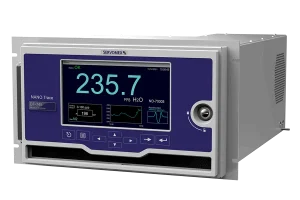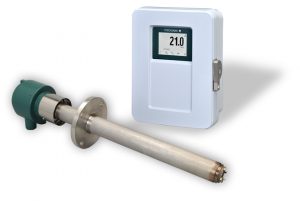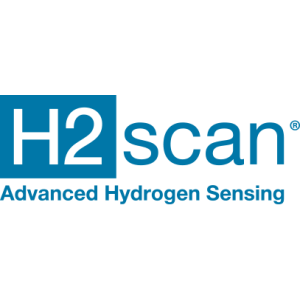Moisture measurement in gas
Accurate moisture measurement in gases is crucial to ensure quality, process optimisation and equipment lifetime in several industrial sectors. Moisture can cause corrosion, catalyst poisoning and other undesirable reactions, making reliable monitoring critical in areas such as petrochemicals, semiconductor manufacturing, energy and medical gas production. With advanced moisture analysis, companies can ensure high product quality, minimise maintenance and comply with strict industry standards.
- System Solutions
- Gas Analysis
- Liquid Analysis
- Flowmeters
- Pressure Gauges
- Level Gauges
- Temperature Gauges
- Laboratory Analysis
- Data Loggers
- Regulators
More information
TDLAS/TDLS (Tunable Diode Laser Absorption Spectroscopy)
Principle
-
Selective IR absorption: TDLAS utilises a diode laser that can emit a narrow and tunable (tunable) wavelength in the infrared range. By tuning the laser to a specific wavelength where the water molecule (H₂O) has a characteristic absorption line, you can measure how much of the light is absorbed.
-
Absorption layers (Beer-Lambert): By knowing the intensity of the light before and after passing through the gas and the path length (i.e. how far the laser travels through the gas), the concentration of water vapour can be calculated.
-
Fast and accurate: Because the diode laser is highly selective, it can quickly measure low levels of water vapour, often in the ppm range. The measurement method is also minimally affected by other gases, as most molecules do not absorb exactly the same wavelength as H₂O.
ZR22G (zirconia-based detector)
What is ZR22G?
-
Zirconia-based sensor: Many ZR22G instruments (e.g. Yokogawa product line) use a solid zirconia (ZrO₂) electrolyte that is conductive to oxygen ions at high temperatures.
-
Frequent oxygen measurement: These sensors are mainly known for measuring oxygen content in flue gases, furnaces and process environments. The principle is based on the fact that a difference in oxygen partial pressure between the sample gas and the reference gas gives rise to an electrical voltage in the zirconia cell.
-
Moisture measurement: Some models or variants can also be used to calculate water content if the relationship between oxygen and water in the process is known (e.g. in combustion processes or in reactors where water is produced/consumed).
How does it work for moisture measurement?
-
Indirectly via partial pressure: If the system is well defined (e.g. a combustion process with known fuel and air supply), the moisture content of the gas can be theoretically calculated from oxygen content and other process parameters.
-
High temperatures: Zirconia sensors usually require a high working temperature (often 600-800°C) for the zirconia to be ion conductive. This makes them particularly useful in hot process streams or directly in chimneys/furnaces.




























